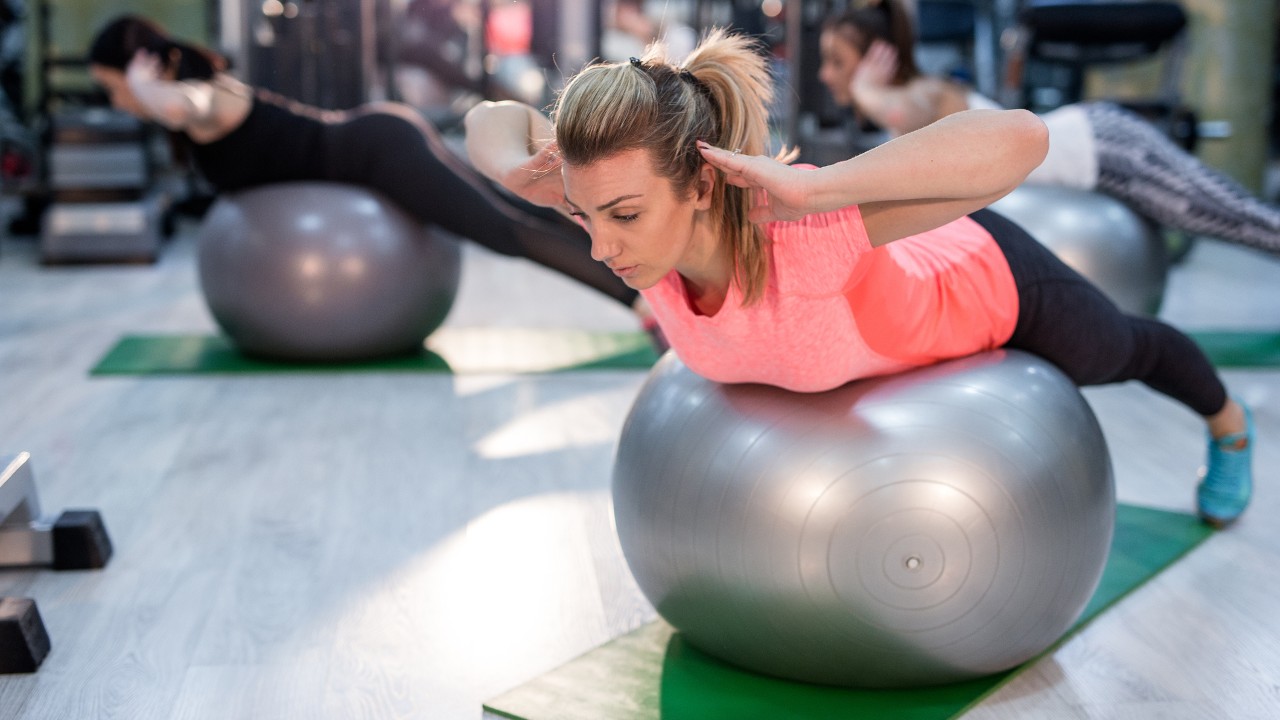How To Do The Gym Ball Back Extension
Strengthen your lower back with this exercise, which also works your core

Whenever gym balls come into play, your core is in for a tough time. Thanks to the the instability they create, pretty much any exercise – and hence any workout – becomes that little bit more challenging when some part of you is resting on a gym ball.
The gym ball back extension is one of the best bodyweight exercises you can do for your lower back. Read on for a full guide to the benefits of this back exercise and how to do it.
Gym Ball Back Extension Benefits
The gym ball back extension primarily works the muscles in your lower and middle back, though the glutes and hamstrings are also recruited. It also stretches your abs and it’s a great exercise to add into your core workouts since it works the back of your body while stretching out the front.
The back extension exercise is typically performed on a stable base, but the benefits of using a gym ball are that stabiliser muscles around the body will be engaged to keep you from toppling off the ball during the move.
The back extension is a good lower-back exercise for improving your posture and combating the common back problems that blight desk workers, but you need to get your form right or you can do more harm than good.
How To Do The Gym Ball Back Extension
Drape yourself over the gym ball so your hips and stomach are resting on it, with your feet on the floor behind you and your legs extended. You can set the ball up so your feet are against a wall or under a bench to create more stability, which might be handy when first learning the exercise.
Place your hands by your temples. Lift your torso to form a straight line from your feet to your feet. Be careful not to overextend – you shouldn’t feel pain in your lower back during the exercise. Lower back to the start slowly.
Sign up for workout ideas, training advice, reviews of the latest gear and more.
If you’re struggling with the exercise then it’s worth perfecting the standard back extension first, or using the back extension machine in a gym. The latter securely locks your feet in place and you lean your lower body against a flat bench. You can also do back extension on the floor. With all variations of the move, make sure you don’t extend yourself too far and cause pain in your lower back.

Nick Harris-Fry is a journalist who has been covering health and fitness since 2015. Nick is an avid runner, covering 70-110km a week, which gives him ample opportunity to test a wide range of running shoes and running gear. He is also the chief tester for fitness trackers and running watches, treadmills and exercise bikes, and workout headphones.
